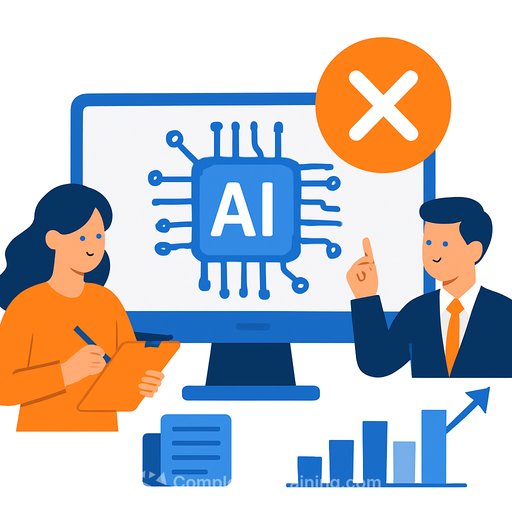How To Write Better Ad Copy When Google Ads Uses AI-Assisted Features
Avoid common pitfalls of automated ad copy in Google Ads. Here’s how to keep your ad copy clear, accurate, and on-brand.
Introduction
Almost every major ad platform now offers some form of AI-generated copy. While these tools speed up campaign launches, they often produce headlines and descriptions lacking creativity or relevance. This can hurt your results.
This article explains how to get the most out of Google Ads’ AI-assisted features without losing control of your message. You’ll learn how the system generates copy, why many AI suggestions fall short, and how to steer the platform toward better ads. The key is to keep your manual copy—the words you write—at the core of your strategy. AI can help, but only if you provide clear, structured inputs. Otherwise, you risk generic ads that confuse your audience and underperform.
Starting Out
Google’s automation can suggest and generate ad copy for you. When Automatically Created Assets (ACA) are enabled, Google pulls from your landing page, existing ads, keywords, and other business info to create new headlines and descriptions for Responsive Search Ads and Performance Max campaigns.
These AI-generated assets complement your manual inputs to boost relevance and performance. But how do you ensure your ads still reflect your strategy?
Before starting, note the opt-in disclaimer for automatically created assets. Google requires you to confirm your landing page is accurate and not misleading. You accept legal responsibility for whatever the AI produces based on your content. This warning shows that while Google’s automation helps, it’s not foolproof. Your ad copy still matters greatly.
View Ideas And Ad Strength Indicator
While building a Responsive Search Ad, Google Ads offers real-time feedback through the “Ad Strength” indicator. RSAs let Google’s machine learning test different headline and description combinations to find what works best.
The Ad Strength indicator encourages a diverse pool of assets by suggesting you:
- Add more headlines.
- Include popular keywords.
- Make headlines more unique.
- Make descriptions more unique.
These prompts help testing but don’t always lead to better ads. The “View Ideas” section often includes generic or inaccurate suggestions like “buy online” for non-ecommerce advertisers.
Since these prompts appear early, they can influence how you write. It’s easy to write just to improve the score. But remember: you write for performance, not a score. A great ad might not get an “Excellent” rating. Use Ad Strength as a guide, but keep your campaign’s goal as the priority.
Enter A Strong Final URL, A.k.a. Landing Page
Your final URL—the landing page—affects how Google scans your site to create AI copy suggestions. The AI pulls from your page content, so keeping it clear, relevant, and updated is key.
If your landing page is vague or lacks clear headlines, Google may generate weak suggestions. Google’s AI tools like Automatically Created Assets (ACA) in Search and Performance Max campaigns rely on your landing page to produce headlines, descriptions, and even image assets.
Performance Max’s Asset Generation tool builds campaign elements including keywords and ad copy from your URL. The new Conversational Experience lets advertisers provide a URL and receive full campaign suggestions.
Because these features depend heavily on your landing page, control the content Google sees and make sure it clearly reflects your offer.
Review And Refine Prefilled Headlines
Google often preloads suggested headlines based on your landing page, keywords, and existing ads. These can save time but aren’t strategic by themselves.
Each headline should have a clear role to communicate value and stand out. Here’s a simple structure to follow:
- Keywords: Align with user search terms to boost relevance and match intent.
- Benefit or Feature: Highlight what users gain or key product/service details.
- Product Name: Specify what you’re promoting, especially if you offer multiple options.
- Call to Action (CTA): Guide users toward a next step like “Start Your Trial” or “Get a Free Demo.”
- Brand Name: Builds trust and clarity, even on non-branded searches.
Cover a range of message types without repetition. Don’t just accept Google’s suggestions or create slight variations. Start with this framework, then refine.
More Ideas, More Problems
The “View Ideas” link next to Google’s suggestions opens the “More Ideas” panel. This tool, powered by AI, shows keywords and CTAs. However, the “Top Keywords” section sometimes includes unrelated terms or competitor names, risking trademark issues and misleading ads.
The “Other Ideas” and “Call to Action Phrases” sections usually list generic CTAs like “Book Now” or “Find Out More.” In practice, they rarely match your actual business offers or tone.
Less experienced advertisers may assume these suggestions are optimized because they come from Google. But they can cause confusion or legal risks if used uncritically.
Descriptions Should Add Value, Not Just Repeat Headlines
Google’s suggested descriptions often fall short. Many are just reworded headlines or very short, missing a chance to add detail or differentiate your offer.
Use descriptions to:
- Support headlines with added detail.
- Highlight specific value propositions.
- Add urgency or emotional appeal, like FOMO or ease of use.
- Answer unspoken questions such as “What’s in it for me?” or “How does this work?”
Descriptions should push searchers closer to clicking by offering a richer understanding of your offer.
Bonus Feature: Conversational Experience In Google Ads
Google is testing a new AI-powered chat assistant inside the ad creation interface. It can suggest ad copy ideas, recommend keywords, and answer questions in real time.
While promising, it’s still under development. Testing shows it often repeats the same suggestions as the standard “View Ideas” panel. Google warns the AI may return inaccurate or outdated info, so verify anything it suggests.
Your interactions may also help train the AI, as Google uses chat activity for improvement.
Conclusion: How To Get The Best Out Of Automated AI Settings
Using Google’s AI features requires guidance and oversight. The AI is only as effective as your inputs and review process.
To get the best results:
- Start with a strong landing page and clear final URL.
- Write manual assets using a clear framework that includes keywords, product clarity, benefits, and brand identity.
- Use Ad Strength prompts and ideas as checkpoints, not strict rules.
- Review all automatically created assets carefully for accuracy, relevance, and legal risk.
Automation can scale your efforts, but your strategy makes them convert. Think of AI as a tool to expand your content, not to create it for you.
Your membership also unlocks:





